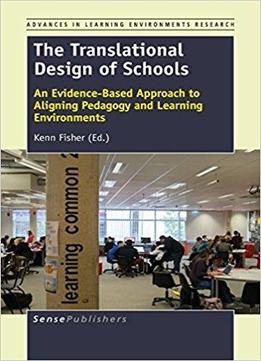
The Translational Design Of Schools
by Kenn Fisher /
2015 / English / PDF
27.1 MB Download
This book summarises the deep level of research carried out since 2008 within the emerging, evidence-based, translational design (EBD) approach to learning environments research. This programme has been carried out by the Learning Environments Applied Research Network of the University of Melbourne, its partners and colleagues. The chapters are based on ten, 3-4 year full-time doctoral research dissertations with each chapter outlining the key findings from these studies. The book links the chapters through the lens of evidence-based design which originates from the health planning sector. The rigour of that sector is based on the well-accepted methodology of translational research used in clinical medicine for many years. In adapting that practice, translational medicine is akin to translational development. When applied to other sectors and disciplines this becomes EBD health planning, translational engineering or, in the case of evidence-based architecture, translational design. Thus educational planning becomes the translational design of learning environments. These doctoral dissertations are examples of this approach. The chapters are organised into a narrative that examines evidence-based design through three key themes. The first explores key issues in learning environments, with three chapters covering spatial literacy in pedagogical practice; engaging students in learning spaces; and re-placing classrooms through flexibility. The second theme focusses on the socio-cultural implications of learning environments exploring student identity formation; aligning learning environment affordances for effective professional development in an innovative senior secondary school; and occupying curriculum as space in the arts. The third theme investigates the design implications for learning environments with four chapters covering corridors, nooks and crannies: making space for learning; the role of the primary school library in learning; plans and pedagogies: school design as socio-spatial assemblage; and evaluating the spatial changes in a technology enabled primary years setting.











